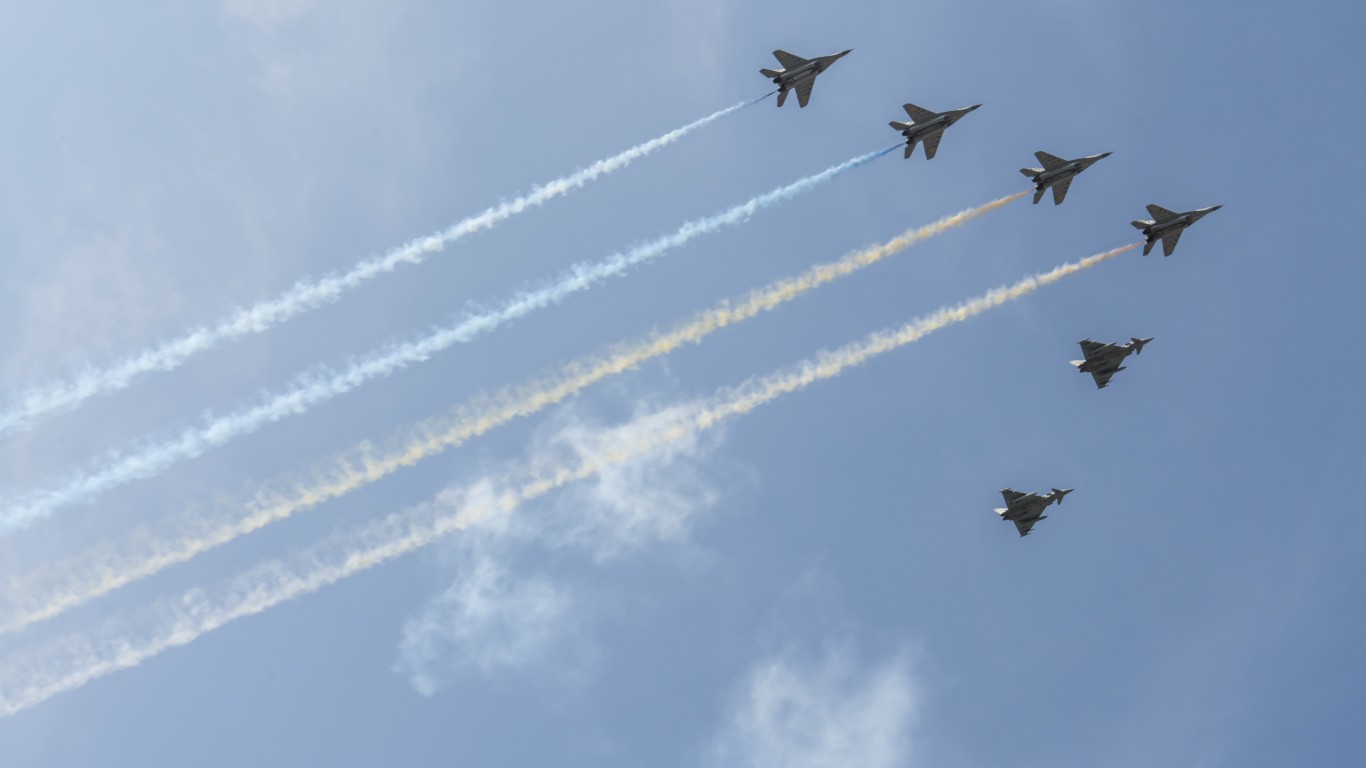
When Russian President Vladimir Putin launched an invasion in Ukraine on Feb. 24, 2022, experts around the world predicted a swift Russian victory. In a briefing to members of Congress weeks earlier, Gen. Mark Milley, chairman of the Joint Chiefs, reported that the Ukrainian capital, Kyiv, could fall in 72 hours if Russia decided to invade. After all, Russia’s defense budget is 10 times that of Ukraine. (See how Russia and Ukraine military spending compares to the world.)
Such dire predictions have proved wrong. Ukrainian resistance has, so far, contained the Russian offensive more effectively than many thought possible. Ukraine has ceded little ground and has even launched counter offensives, pushing Russian troops back towards the border in some cases.
While the U.S. is not bound by a treaty to defend Ukrainian independence, President Joe Biden appears to be doing nearly everything in his power to support the resistance, short of deploying American troops. The U.S. is not alone in providing military assistance to Ukraine and impose sanctions on Russia.
In addition to issuing unprecedented economic sanctions, the Biden Administration has committed about $3.4 billion in security assistance to Ukraine since the invasion began. This assistance has largely been in military hardware – from helicopters and Humvees, to artillery pieces and land mines. Here is a look at the deadliest weapons of all time.
Using press releases from the Department of Defense, 24/7 Wall St. identified the weapons the U.S. is supplying to Ukraine.
Going forward, how much further the U.S. could be drawn into the conflict remains to be seen. Should the fighting spill over into any one of the NATO member states that border Ukraine, the U.S. will be obligated to engage militarily. Additionally, many fear that continued U.S. military assistance to Ukraine could escalate tensions and lead to a confrontation between the world’s two largest nuclear superpowers – Russia and the United States. Here is a look at what a nuclear war would do to the world.
As the war enters its fourth month, when, or how it will end is anyone’s guess.
Click here to how the U.S. is arming Ukraine.
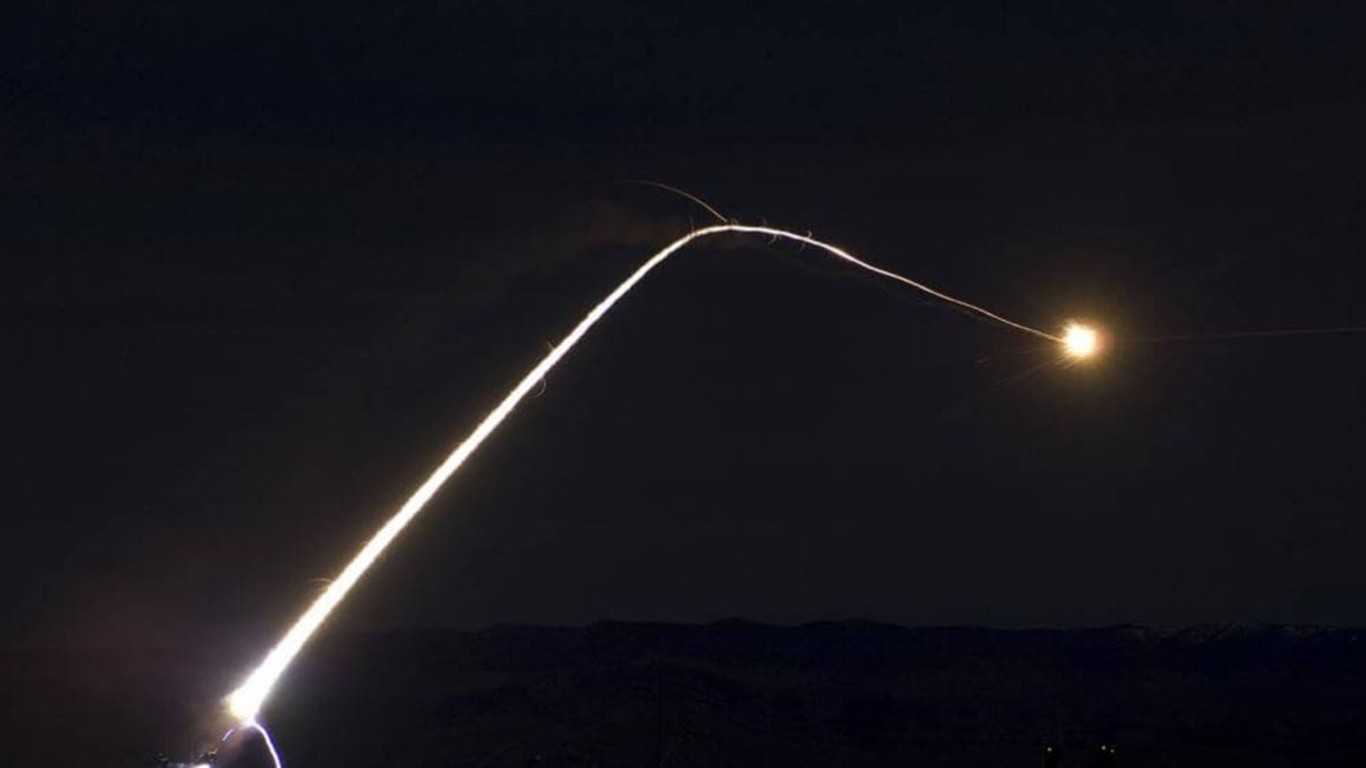
Stinger anti-aircraft system
> Amount: Over 1,400
As of April 22, 2022, the United States has committed to providing Ukraine with more than 1,400 Stinger anti-aircraft systems. Stinger missiles are lightweight and portable, which allows for rapid deployment. In Ukraine, Stingers and other surface-to-air missile systems have helped ensure that Russia does not gain air superiority, despite having an air force 10 times larger than Ukraine’s.
The Stinger, manufactured by defense contractors Raytheon and General Dynamics, has been a part of the U.S. arsenal since 1978. Notably, the U.S. supplied Afghan fighters with Stingers in the 1980s to push back against the Soviet invasion.
[in-text-ad]
Javelin and other anti-armor systems
> Amount: Over 19,500
The Javelin is a shoulder fired weapons system that fires self-guided rockets designed to be effective against armored vehicles, bunkers, and caves. Manufactured in a joint partnership between Lockheed Martin and Raytheon, Javelin launchers can be carried and fired by a single person, and the rockets have an effective range of up to 1.5 miles.
Russian defenses have proved largely ineffective against Javelin rockets, and as a result, the weapons have been successful in removing Russian tanks from the battlefield and have proved instrumental in Ukraine’s resistance so far. To date, the U.S. has committed over 5,550 Javelin anti-armor systems to President Volodymyr Zelenskyy of Ukraine, in addition to another 14,000 plus units of other anti-armor systems.
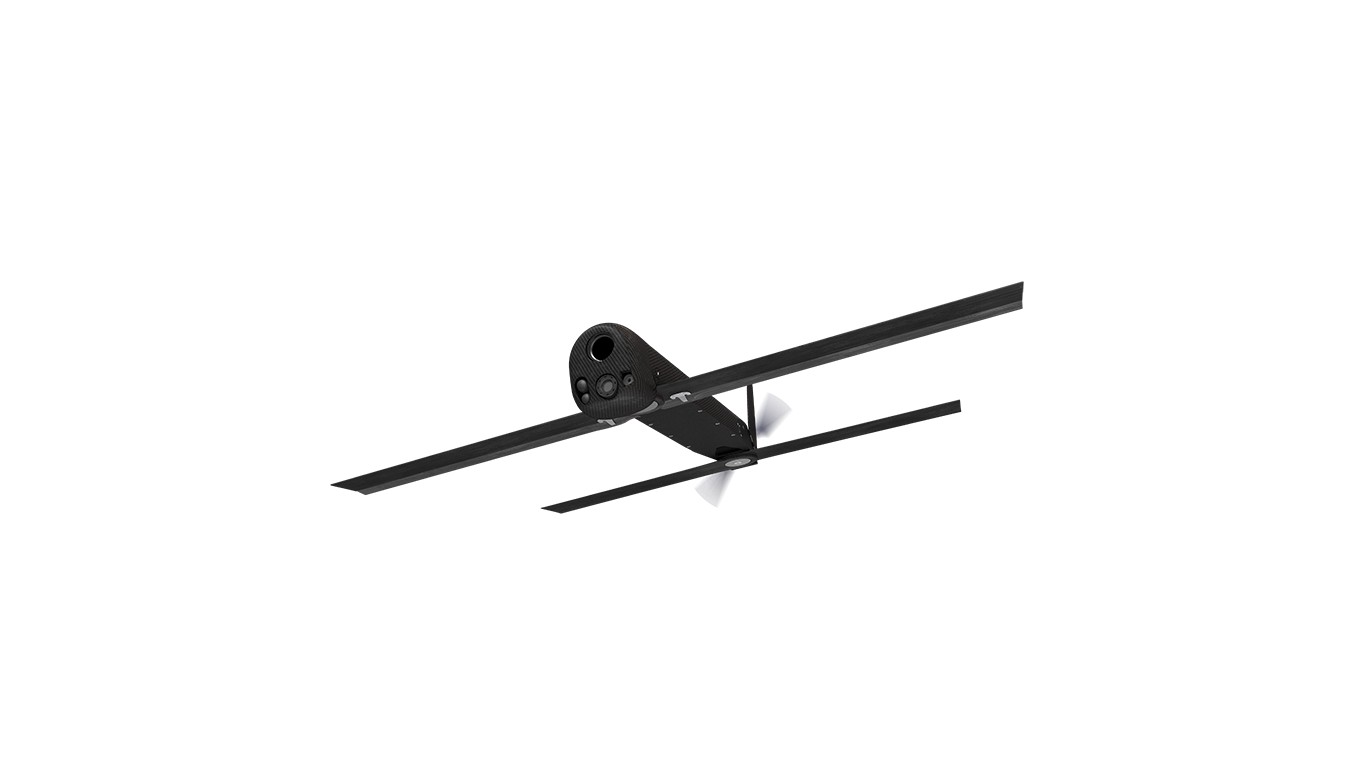
Switchblade tactical aerial drone
> Amount: Over 700
The Switchblade tactical aerial drone, manufactured by AeroVironment, is effectively a flying robot outfitted with a camera, a GPS system, and explosives. Like many other weapons systems the U.S. is supplying to Ukrainian fighters, the Switchblade is highly portable, some are even small and light enough to fit into a backpack, and rapidly deployable.
There are two Switchblade models – the Switchblade 300, which weighs only 5.5 pounds and has range of 6 miles and total flight time of 15 minutes, and the more substantial Switchblade 600, which weighs 33 pounds, has a 25 mile range and 40 minutes of maximum flight time, and is effective against armored vehicles. Unlike many traditional rockets, the Switchblade can be recalled after launch if circumstances change. The U.S. has committed to supplying Ukraine with over 700 Switchblade systems.
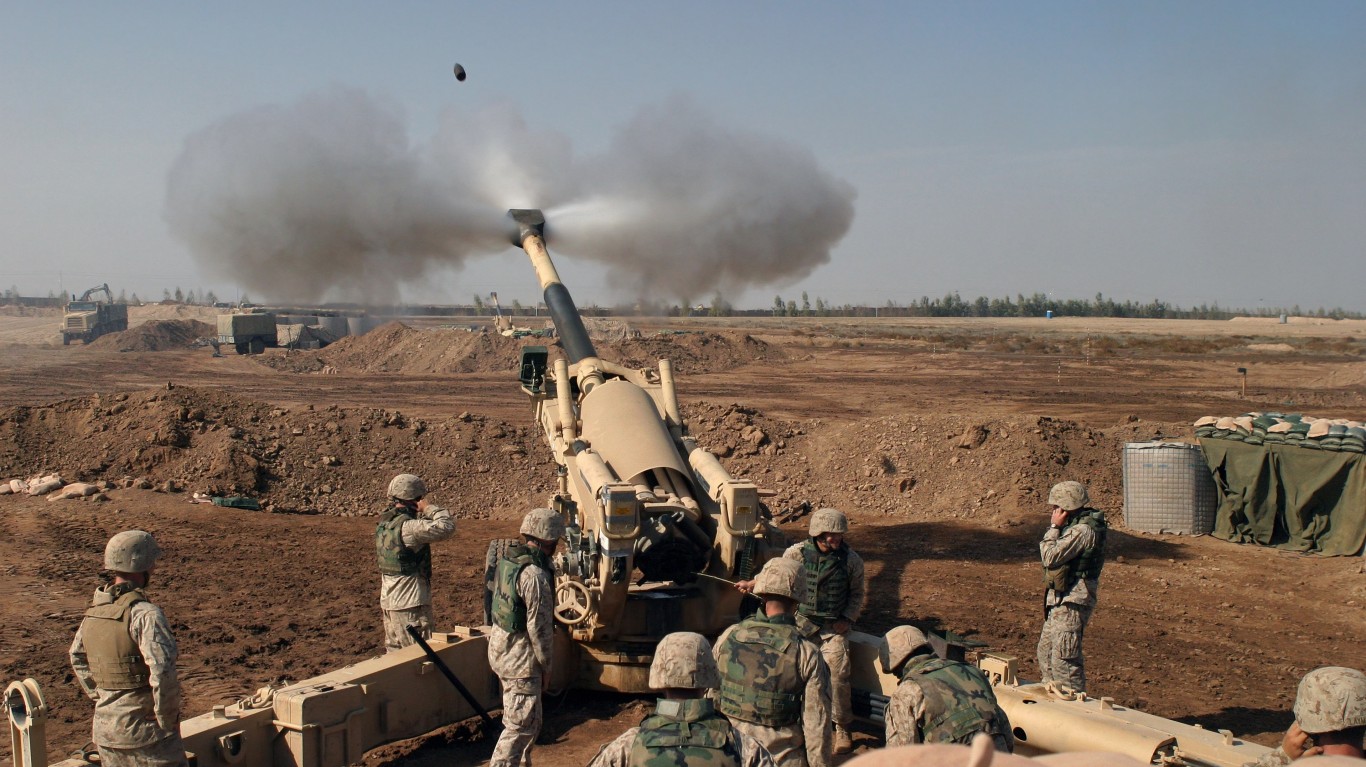
155 mm Howitzers artillery
> Amount: 90 guns + 183,000 rounds + 72 towing vehicles
Much of the weaponry the U.S. is supplying to Ukraine are technologically advanced systems like drones and homing missiles. The 155 mm Howitzer field artillery gun, on the other hand, operates in much the same way as weaponry considered cutting edge a century ago. Though the weapon’s payload can often be GPS controlled, the Howitzer is effectively an artillery cannon.
These weapons require a small crew to operate them and have an effective range of up to 15 miles. The U.S. has committed to 90 Howitzer guns, in addition to 183,000 rounds of ammunition and 72 vehicles to maneuver the artillery pieces. Ukrainian resistance fighters have been using 155 mm Howitzers to shell Russian positions to meaningful effect.
[in-text-ad-2]
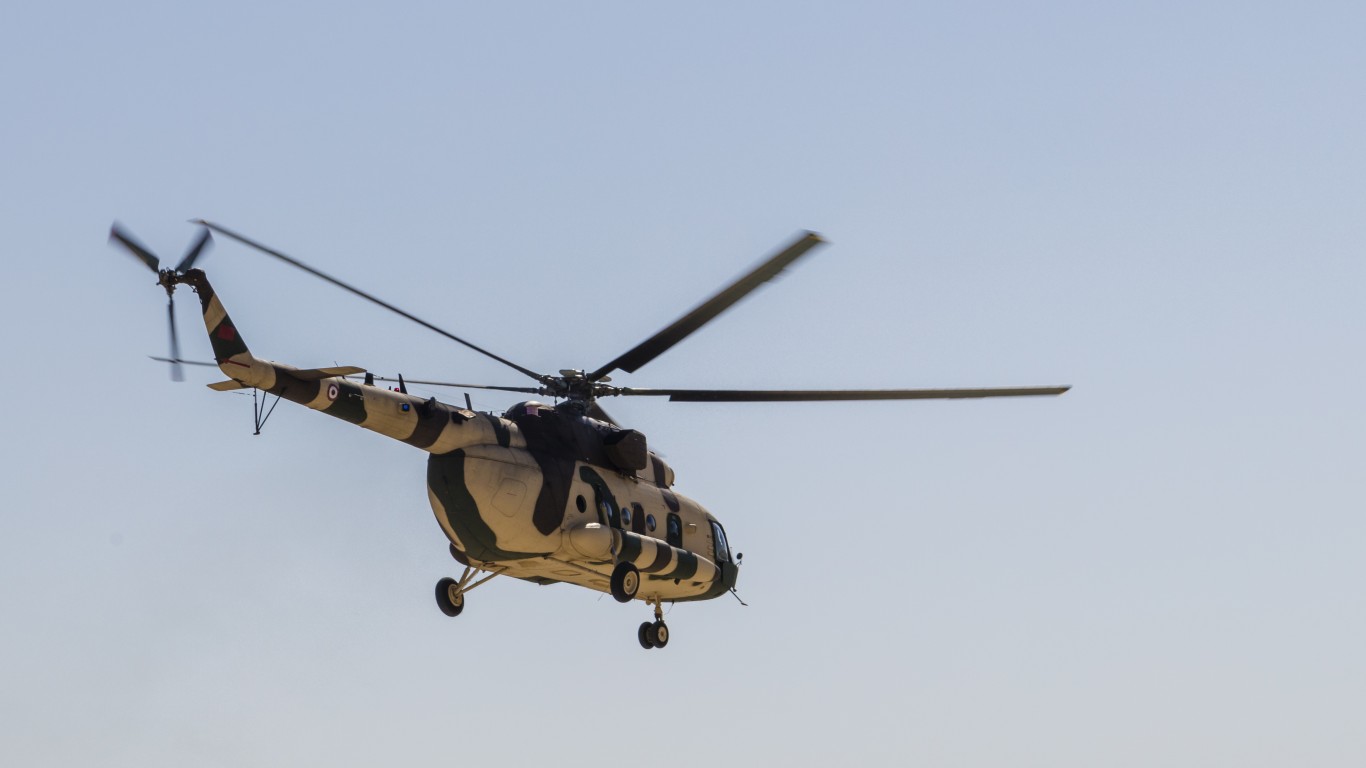
Mi-17 helicopters
> Amount: 16
The U.S. government is transferring a fleet of Mi-17 helicopters, which were originally acquired for use by the Afghan government, to Ukraine. The helicopters were first purchased a decade ago by the Pentagon from a Russian arms manufacturer and will now be used against Russia as a means of transporting troops. Mi-17 helicopters require a crew of three and can carry up 24 paratroopers.
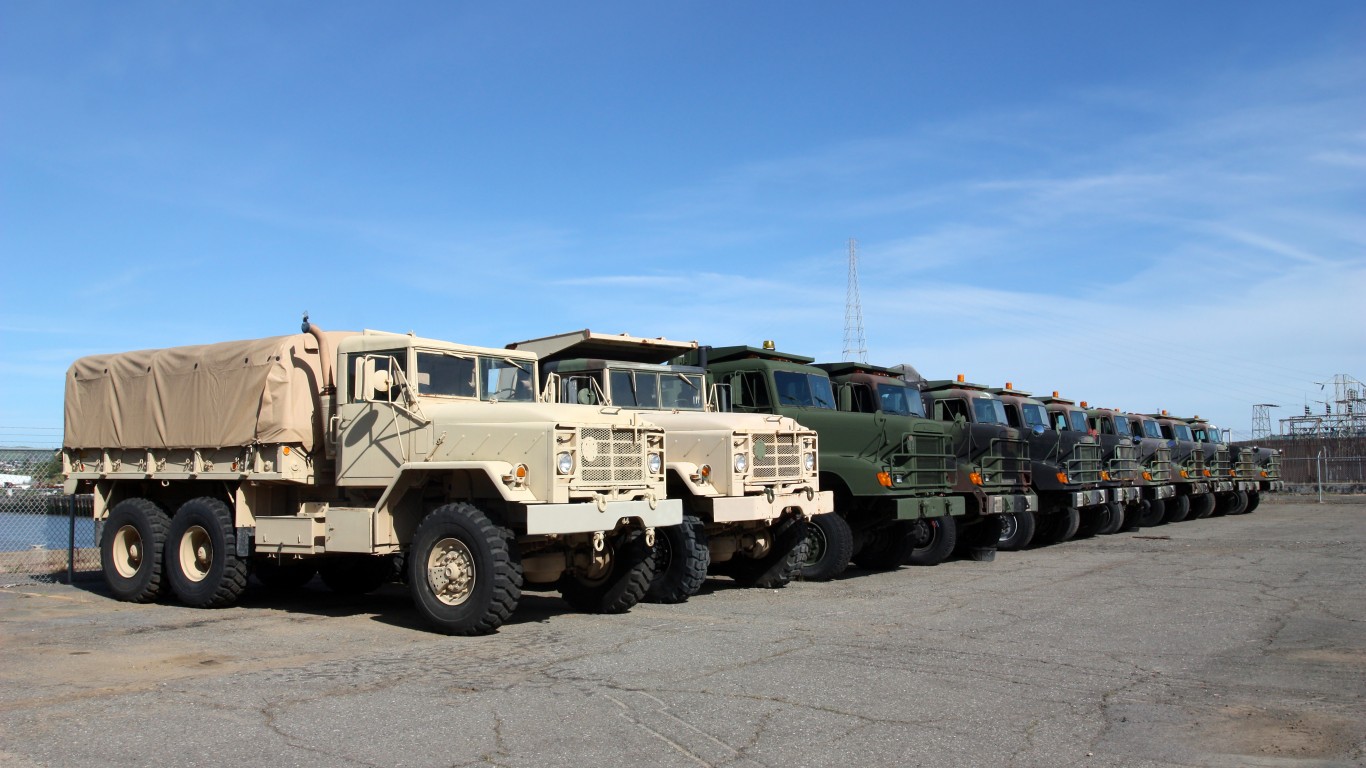
Armored High Mobility Multipurpose Wheeled Vehicles
> Amount: Hundreds
High Mobility Multipurpose Wheeled Vehicles, or HMMWV, colloquially known as a Humvee, are highly capable vehicles that, when armored, can withstand explosive blasts and small arms fire. Humvees can be outfitted with a wide range of military hardware, including machine guns and rocket launchers, and can be optimized to carry troops or supplies. Humvees are relatively simple to repair and have 16 inches of ground clearance, making them highly capable on a wide variety of terrain.
As part of the White House’s pledge to support Ukraine, the U.S. has pledged to send the besieged county hundreds of Humvees.
[in-text-ad]
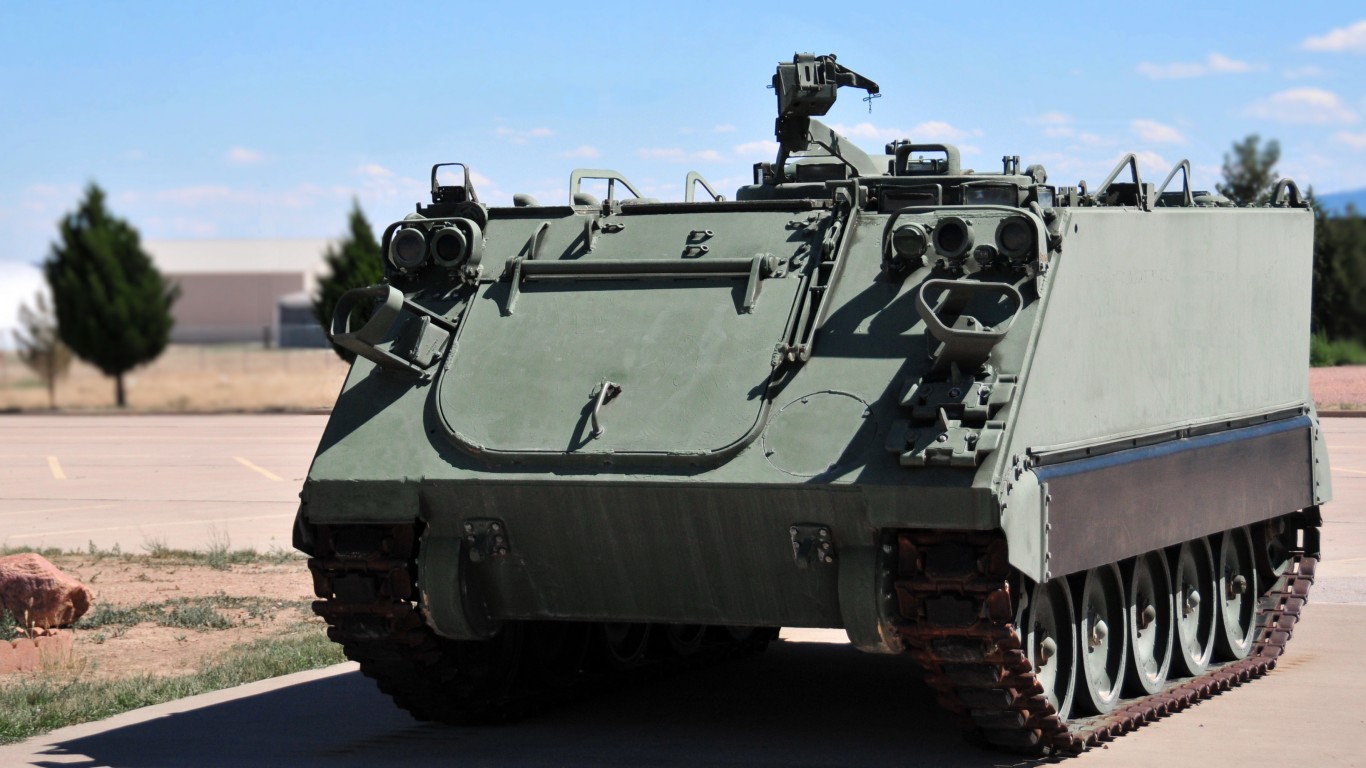
M113 armored personnel carriers
> Amount: 200
The M113 armored personnel carrier is a military vehicle designed to transport troops. The vehicles, which use a continuous track system, can each carry up to 15 armed soldiers while protecting them from small arms fire and the effects of artillery.
The U.S. Army used the M113 widely in the Vietnam War but stopped buying them in 2006, favoring the more powerful M2 Bradley. Despite being effectively obsolete for American forces in the eyes of the Pentagon, the M113 will be an asset in Ukraine, where older Soviet-era personnel carriers are largely in a state of disrepair.
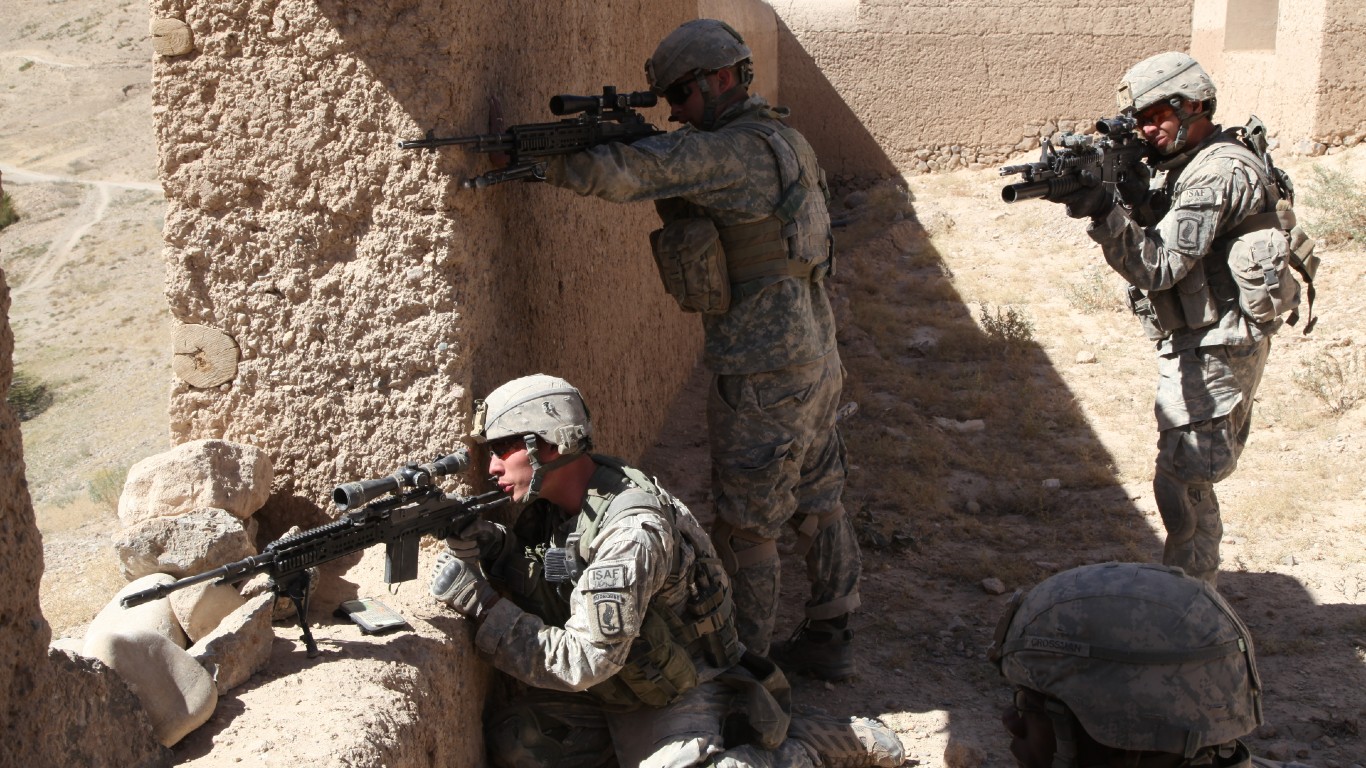
Small arms
> Amount: Over 7,000, and 50 million rounds of ammunition
Along with transport vehicles, artillery, and technologically advanced weapons systems, the U.S. is also providing Ukraine with thousands of small arms for Ukrainian fighters to carry. These include a reported 5,000 rifles, 1,000 pistols, 400 machine guns, and 400 shotguns – plus over 50,000,000 rounds of ammunition.
Body armor and helmets
> Amount: 75,000 sets
In addition to weaponry to be deployed on the battlefield, the U.S. has also pledged protective gear for Ukrainian fighters. The U.S. will send a reported 75,000 sets of body armor and helmets to outfit Ukrainian troops and offer some protection from the Russian attack.
[in-text-ad-2]

Phoenix Ghost tactical aerial drone
> Amount: 121
The Department of Defense announced in April 2022 that it would send 121 Phoenix Ghost tactical aerial drones to Ukraine to help stem the Russian invasion. The Phoenix Ghost is a similar weapon to the Switchblade drone, but brand-new, and specifically tailored for situations similar to that faced by Ukranians fighting in the Donbas region.
Little is known about the Phoenix Ghost beyond that it is manufactured by AEVEX Aerospace, a California-based defense contractor, and is described by the Pentagon as a “one-way” drone that will “deliver a punch,” implying they are some sort of kamikaze drones.
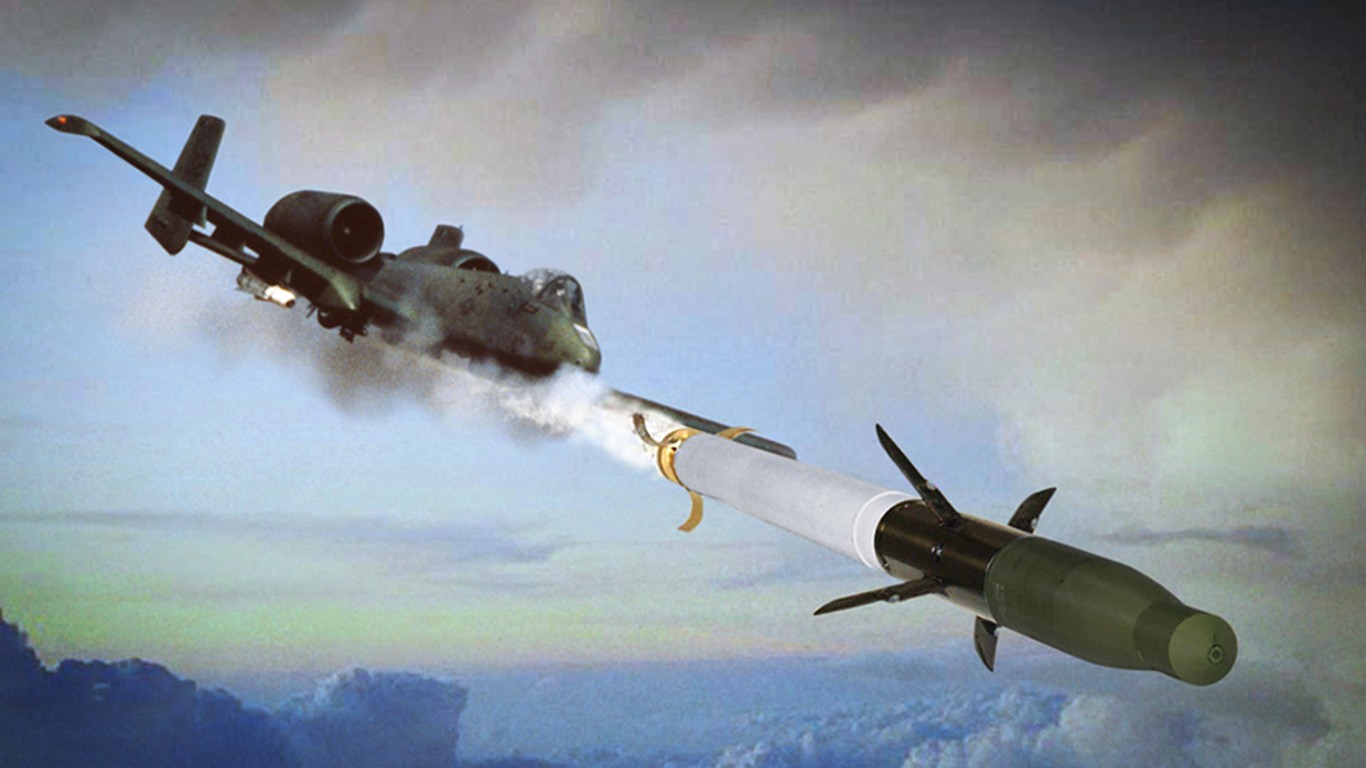
Laser-guided rocket systems
> Amount: N/A
The U.S. has pledged an indefinite number of laser-guided rocket systems to Ukraine. This will include $22.6 million worth of the Advanced Precision Kill Weapon System II, or APKWS II, which is a 70mm rocket guided by a BAE Systems laser guidance kit. Precision guidance allows the rockets to hit lightly armored targets in restricted areas while minimizing collateral damage.
Though it remains to be seen which platform the Ukrainians will use to fire the rockets, experts speculate that Ukraine may be able to outfit their Turkish-made Bayraktar TB2 drones, or the 16 Mi-17 U.S.-provided helicopters with the rockets.
[in-text-ad]
Puma aerial drone
> Amount: N/A
Most of the military supplies the U.S. has pledged to Ukraine are being drawn from existing American stockpiles. The Puma aerial drone is an exception. The Department of Defense inked a $19.7 million deal with defense contractor AeroVironment to supply Puma drones to aid the Ukrainian military effort.
Puma is a surveillance drone equipped with an infrared camera that can fly more than three hours on a full battery over a range of 12 miles.

Unmanned coastal defense vessels
> Amount: N/A
The U.S defensive package to Ukraine includes a number of unmanned coastal defense vessels, also known as uncrewed surface vessels, or simply drone boats. Though U.S. officials have stressed that the drone boats will be primarily defensive assets, used to dissuade any potential future Russian amphibious assault, they could also theoretically be equipped with offensive weapons, such as rocket launchers, to attack Russian naval assets.
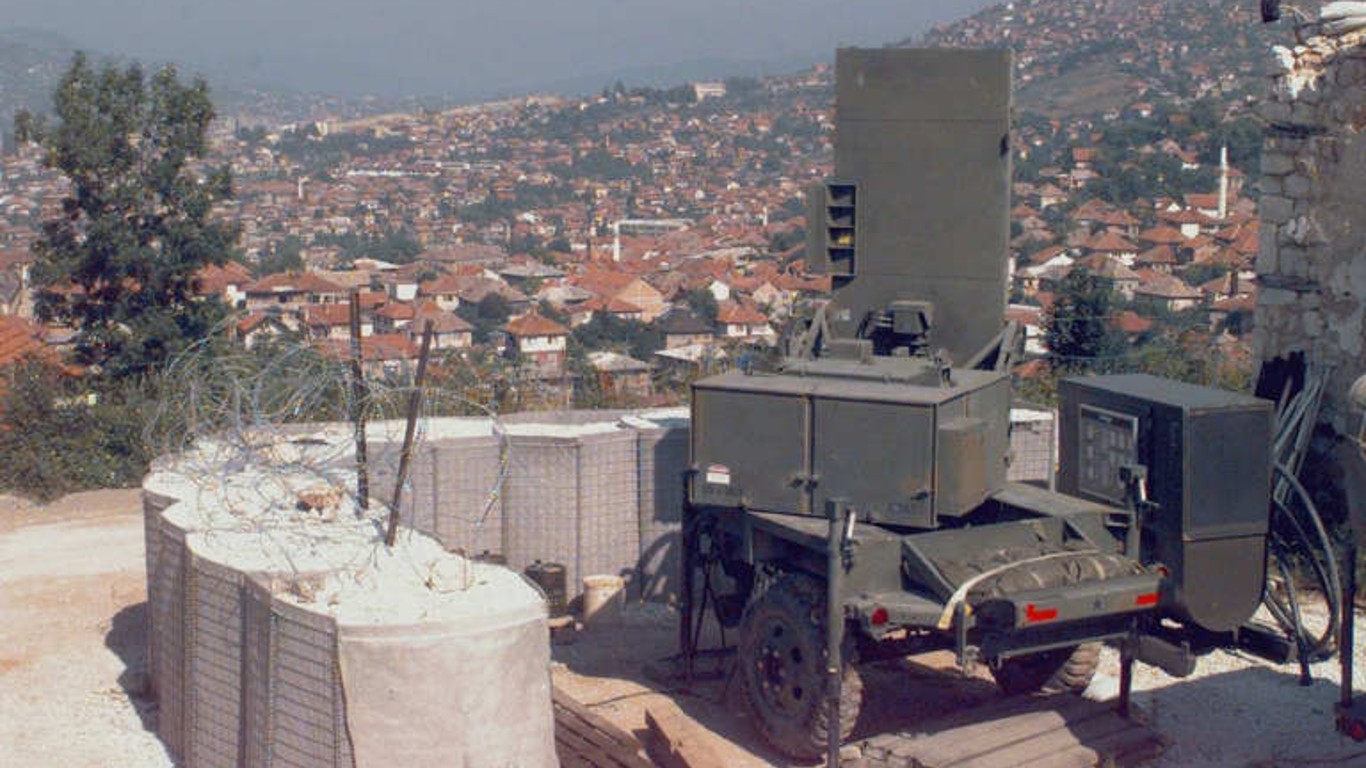
AN/TPQ-36 counter-artillery radars and counter-mortar radars
> Amount: 18
AN/TPQ-36 counter-artillery radars, manufactured by Northrop Grumman and ThalesRaytheonSystems, are mobile, short range systems designed to detect incoming mortar, artillery and rocket fire. These systems can also assist in determining the point of origin of incoming fire for the purposes of a counterattack.
The AN/TPQ-36 system can be set up for use in 15 minutes and broken down to move in five minutes or less. Units typically require a Humvee or 2.75 ton truck to move and can be critical in saving military and civilian lives in Ukraine.
[in-text-ad-2]
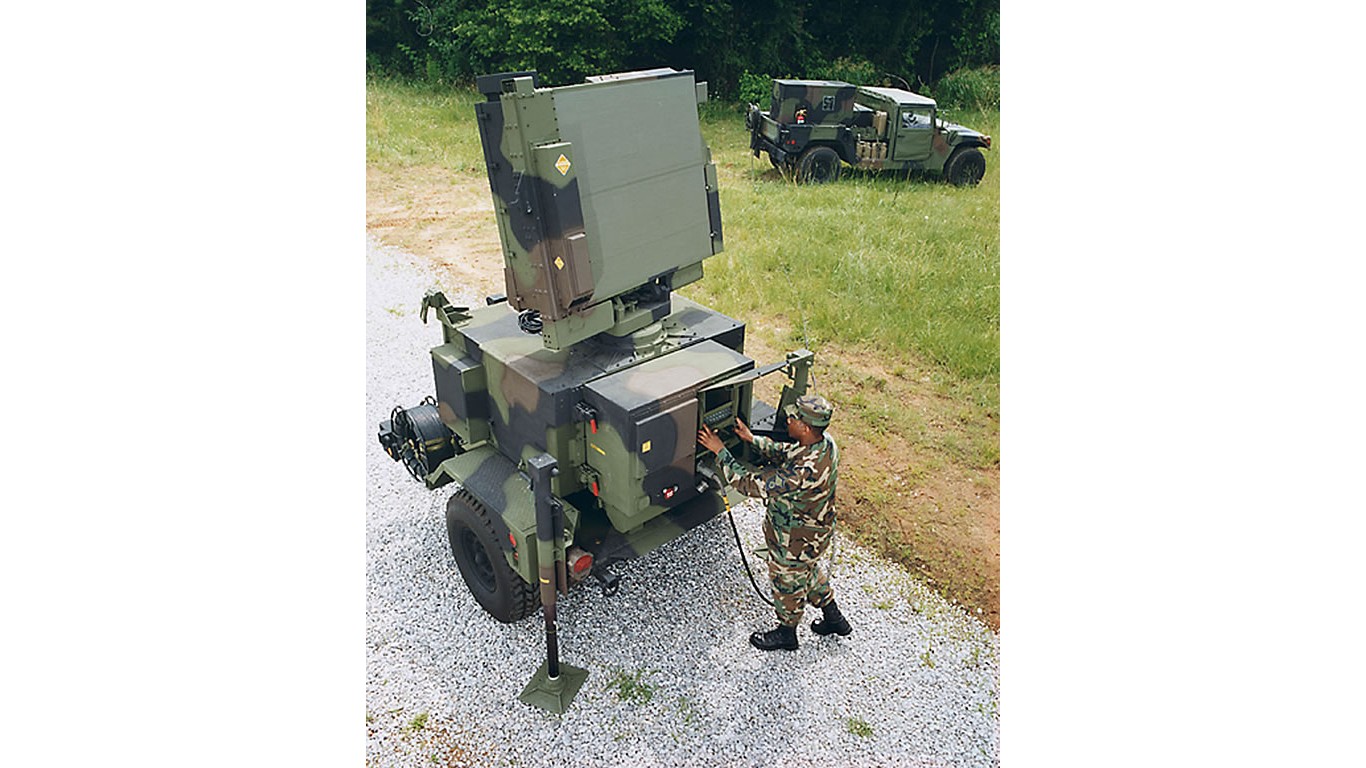
AN/MPQ-64 Sentinel air surveillance radars
> Amount: 2
AN/MPQ-64 Sentinel air surveillance radars are designed to identify incoming threats from drones, cruise missiles, and both fixed-wing and rotary-wing aircraft – including helicopters and fighter jets. The system can be integrated into air defense systems that can then eliminate any detected incoming aerial threats. The U.S. has agreed to supply two of these advanced systems to Ukraine.
M18A1 Claymore anti-personnel mines
> Amount: N/A
The M18A1 Claymore anti-personnel mine is a remotely detonated mine that fires a pattern of steel balls, much like a shotgun, in a fixed direction. The weapon has a range of about 110 yards and is effective against infantry troops and unarmored vehicles. So far, Claymores have reportedly been instrumental in slowing Russia’s progress in Ukraine.
[in-text-ad]
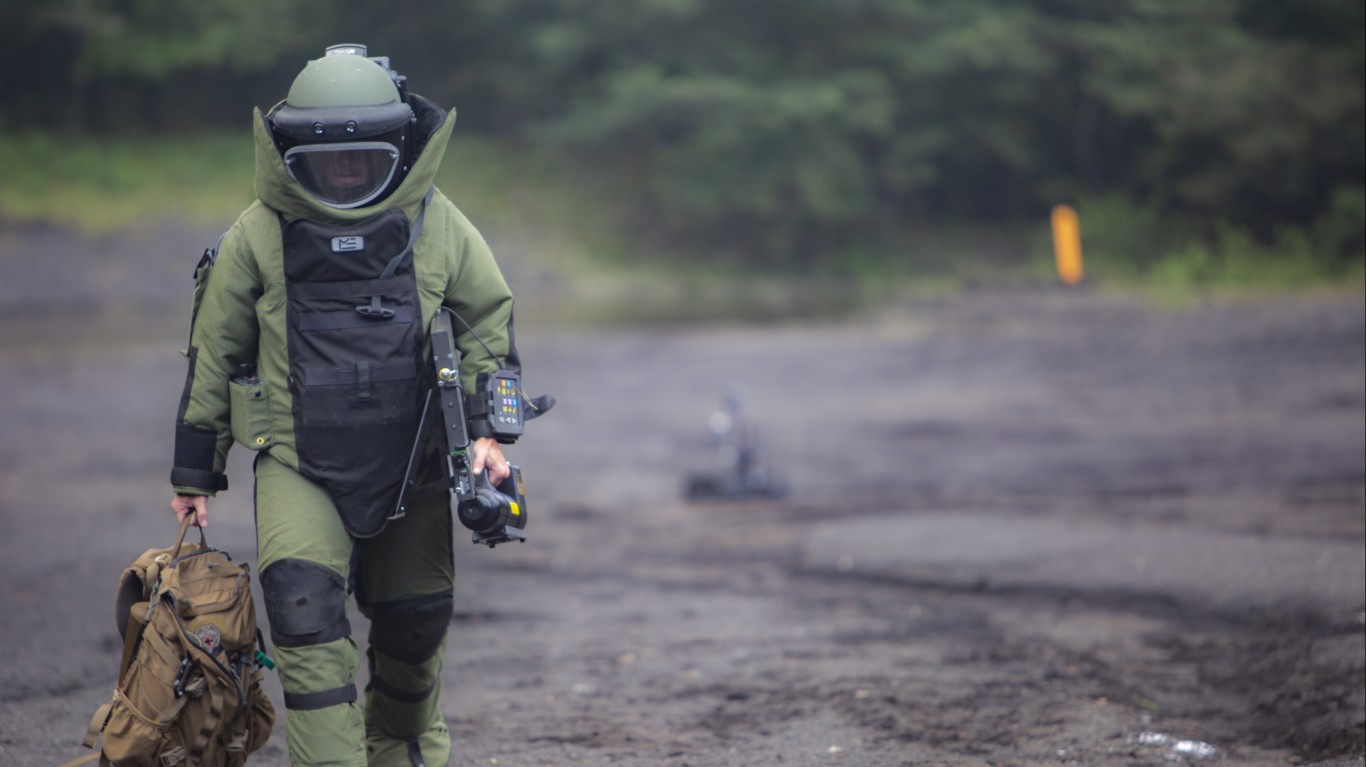
C-4 explosives and demolition equipment for obstacle clearing
> Amount: N/A
C-4 is a versatile type of plastic explosive that can be used both on land and underwater. C-4 is being supplied by the U.S. to Ukraine expressly for the purposes of clearing obstacles and destroying Russian munitions and equipment, including landmines.
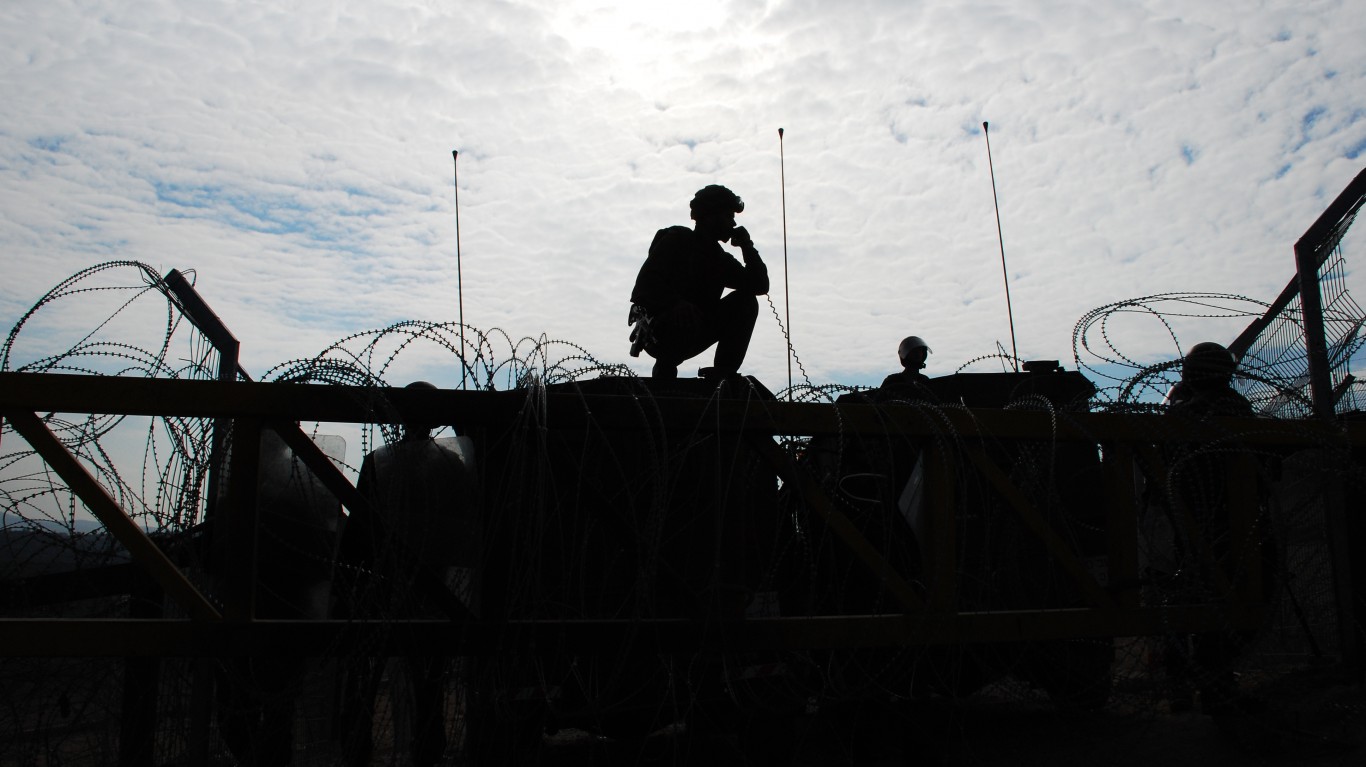
Tactical secure communications systems
> Amount: N/A
Effective and secure communication can mean the difference between victory and defeat in warfare, and to help the Ukrainian resistance in this capacity, the U.S. has pledged shipments of tactical secure communications systems. Because the Russian offensive continually targets Ukrainian telecom infrastructure, these systems may be crucial in repelling the Russian invasion.

Night vision devices, thermal imagery systems, optics, and laser rangefinders
> Amount: Over 2,000
In addition to advanced weapons and communication systems, the U.S. is sending Ukrainian fighters over 2,000 units of night vision devices, thermal imagery systems, optics, and laser rangefinders. These tools can empower individual soldiers with greater capabilities pertaining to information gathering and battle fighting.
[in-text-ad-2]
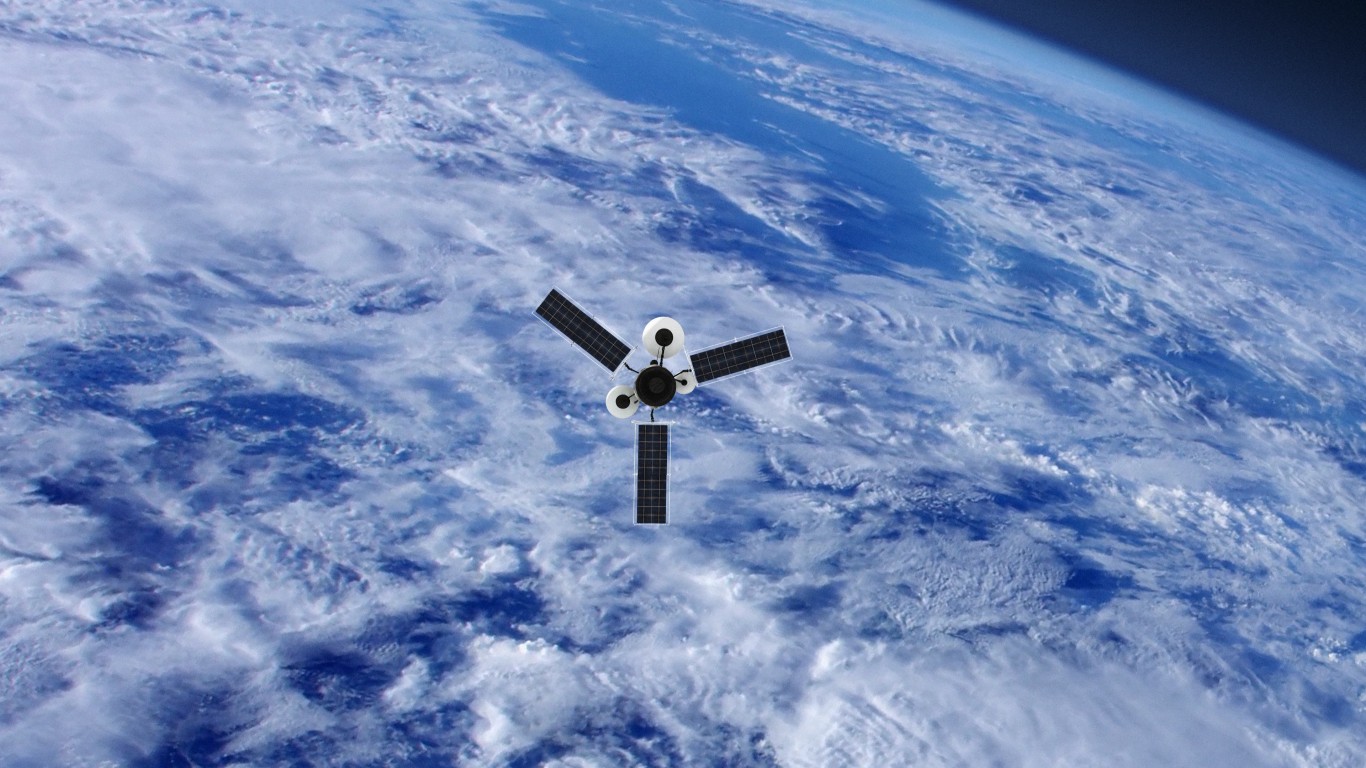
Commercial satellite imagery services
> Amount: N/A
Commercial satellite imagery is one of several intelligence sharing initiatives the U.S. has taken to aid Ukraine’s fight against the Russian invasion. Through a partnership with over 100 companies, including Maxar, BlackSky, and Planet, hundreds of commercial satellites are providing Ukraine and NATO nations with images of Russian troop movement and battlefield organization.
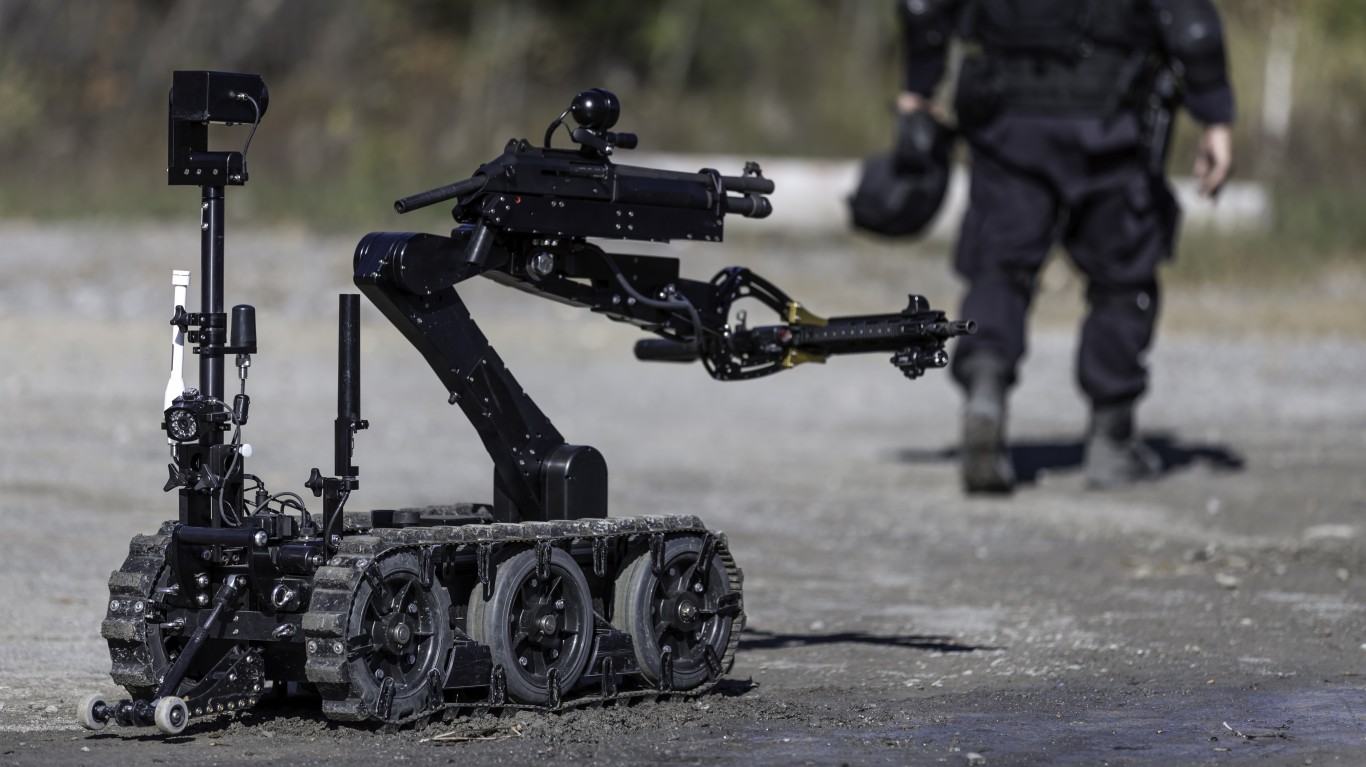
Explosive ordnance disposal protective gear
> Amount: N/A
Battlefields around Kyiv and eastern Ukraine are strewn with Russian land mines and other explosives – perhaps the most lethal of which is known as the Bouncing Betty, which springs from the ground to explode at waist-height. Safely disposing of this bomb and other explosives is hazardous and requires specialized protective gear, much of which is being sent to Ukraine from the United States.
[in-text-ad]
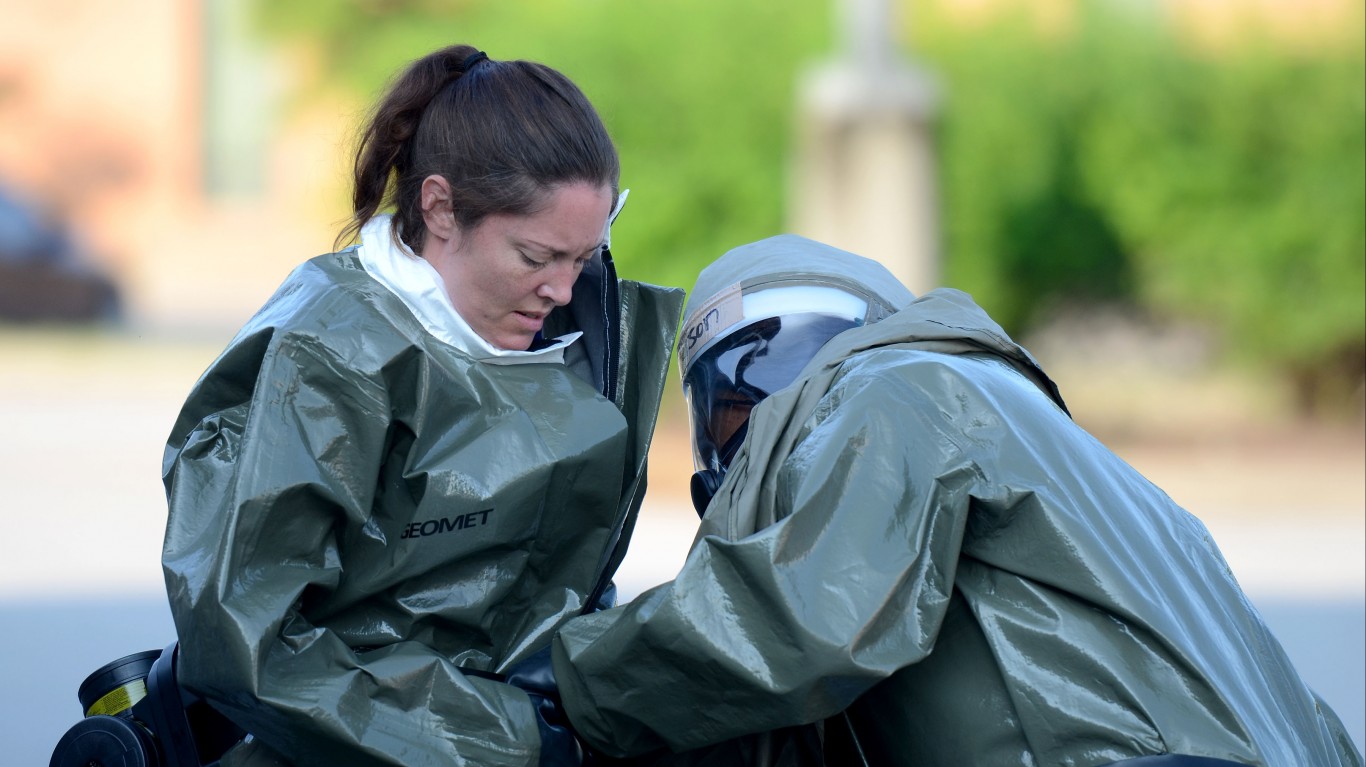
Chemical, biological, radiological, nuclear protective equipment
> Amount: N/A
Though Russia has claimed to have destroyed the last of its chemical weapons stockpiles in 2017, many remain skeptical and are wary that Russia may use chemical, biological, or even nuclear weapons against Ukraine. Anticipating this possible eventuality, the U.S. has pledged protective gear against such attacks.

Medical equipment and supplies, including first aid kits
> Amount: N/A
Medical equipment and supplies, along with surveillance radar, and body armor and other protective gear, are one of several items the U.S. has pledged expressly to help save Ukrainian lives during Russia’s ongoing invasion. Other countries, as well as organizations and individuals are also donating medical supplies and first aid kits to Ukraine’s resistance effort.
Are You Ahead, or Behind on Retirement? (sponsor)
If you’re one of the over 4 Million Americans set to retire this year, you may want to pay attention. Many people have worked their whole lives preparing to retire without ever knowing the answer to the most important question: are you ahead, or behind on your retirement goals?
Don’t make the same mistake. It’s an easy question to answer. A quick conversation with a financial advisor can help you unpack your savings, spending, and goals for your money. With SmartAsset’s free tool, you can connect with vetted financial advisors in minutes.
Why wait? Click here to get started today!
Thank you for reading! Have some feedback for us?
Contact the 24/7 Wall St. editorial team.
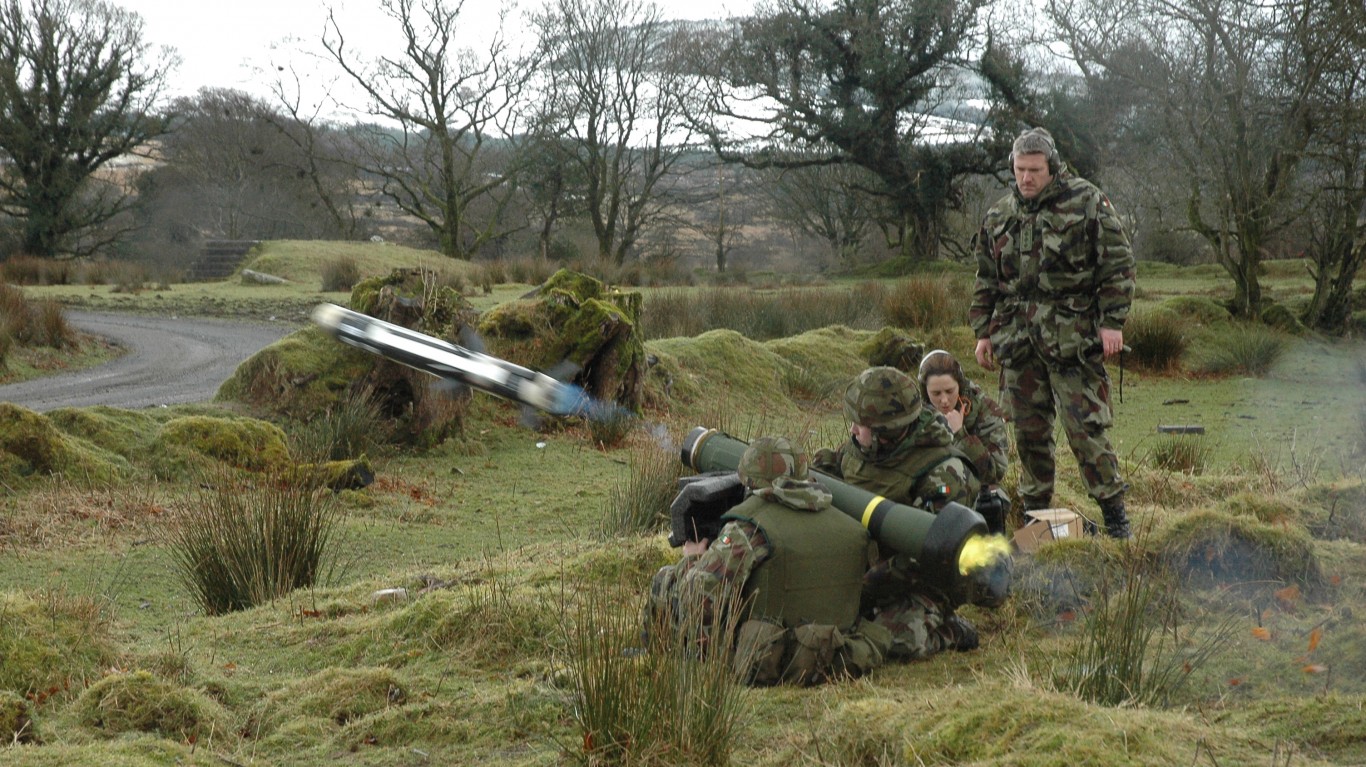
 24/7 Wall St.
24/7 Wall St.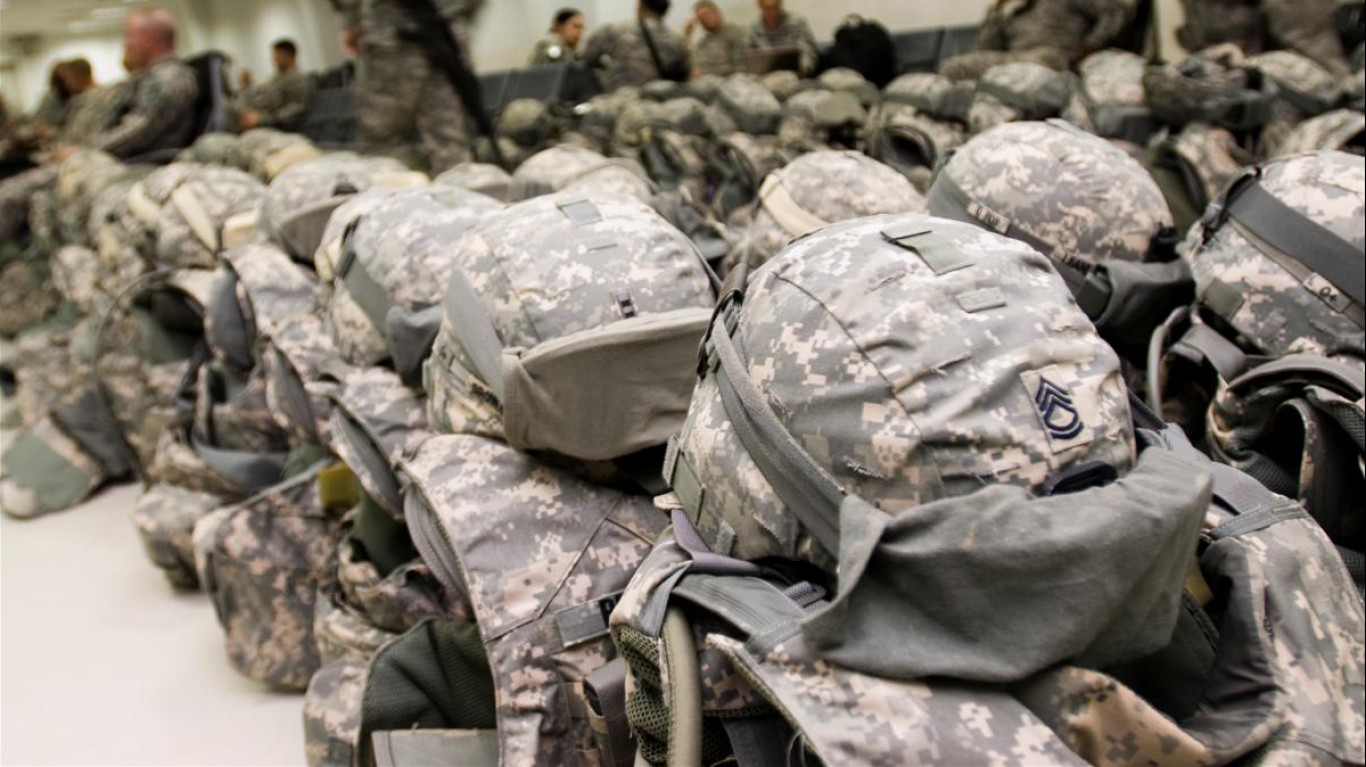
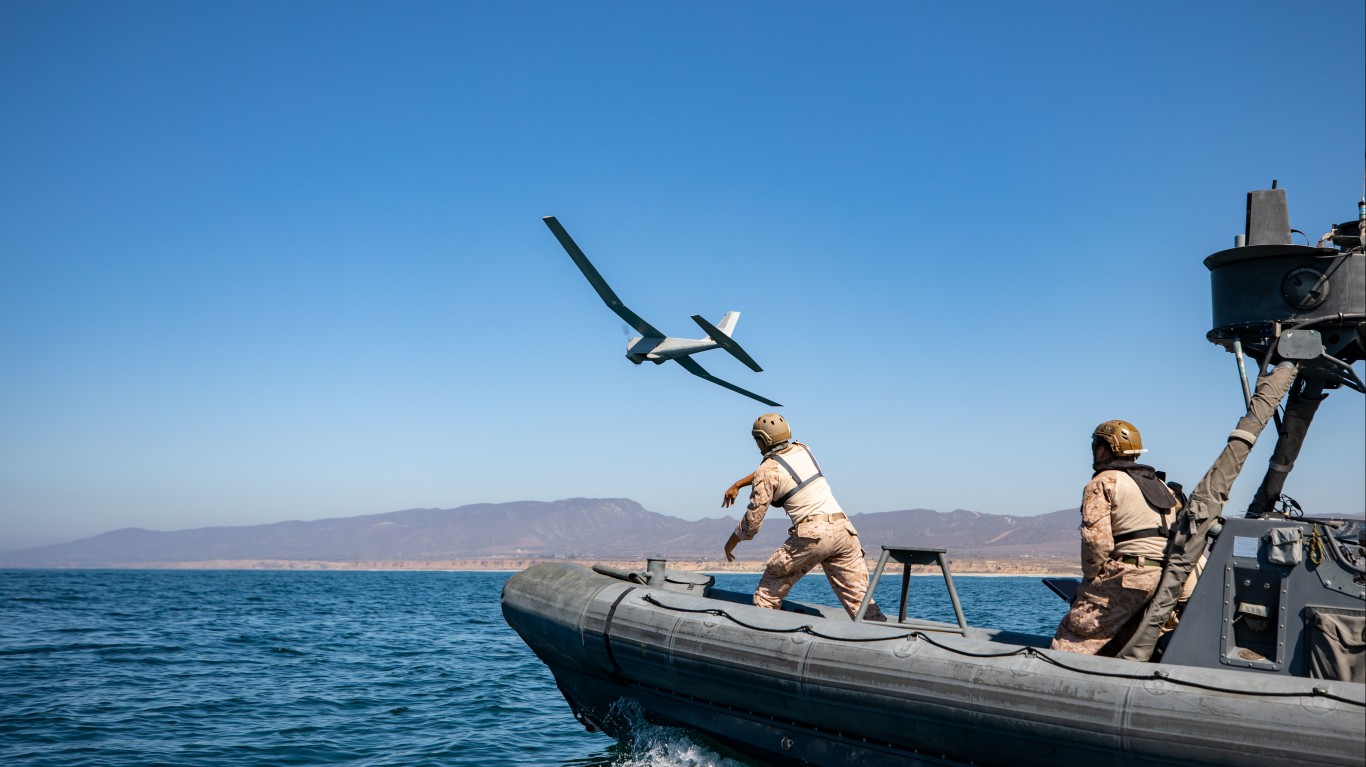
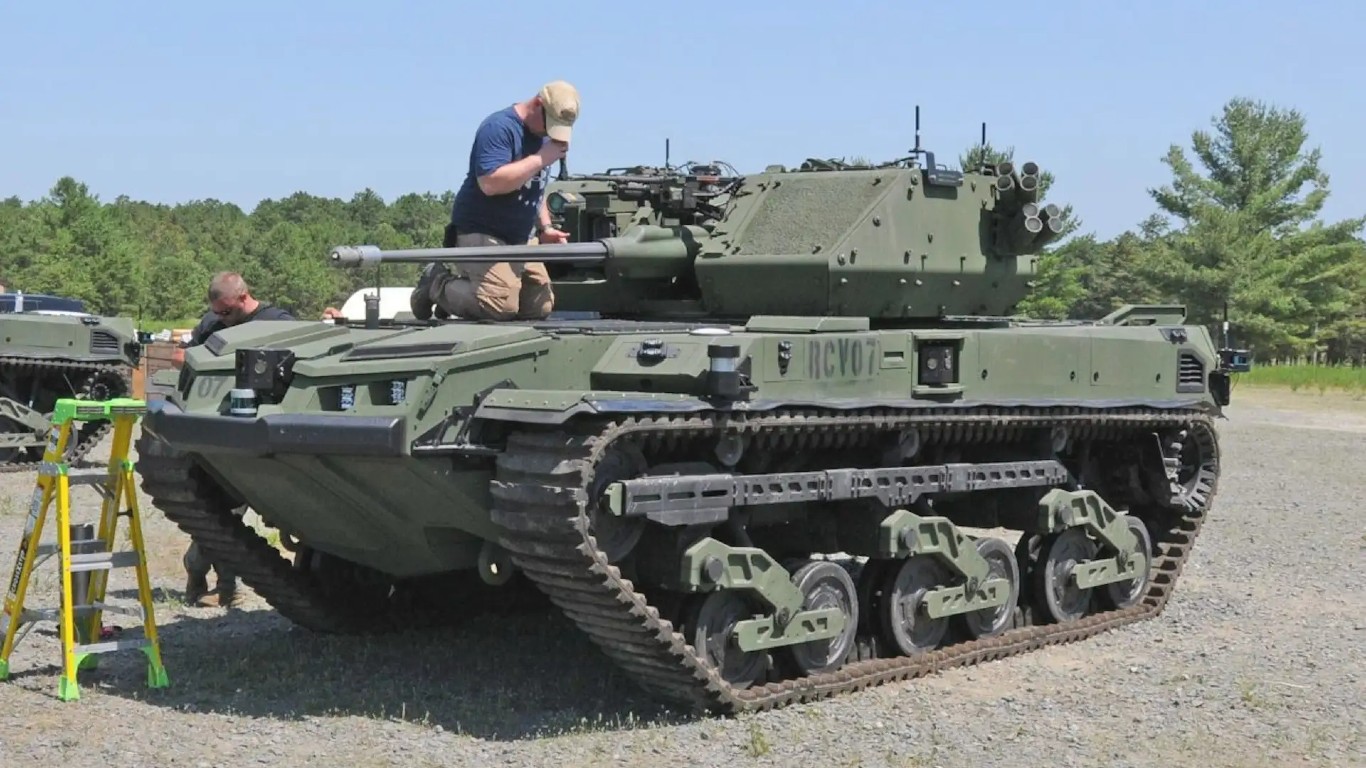 24/7 Wall St.
24/7 Wall St.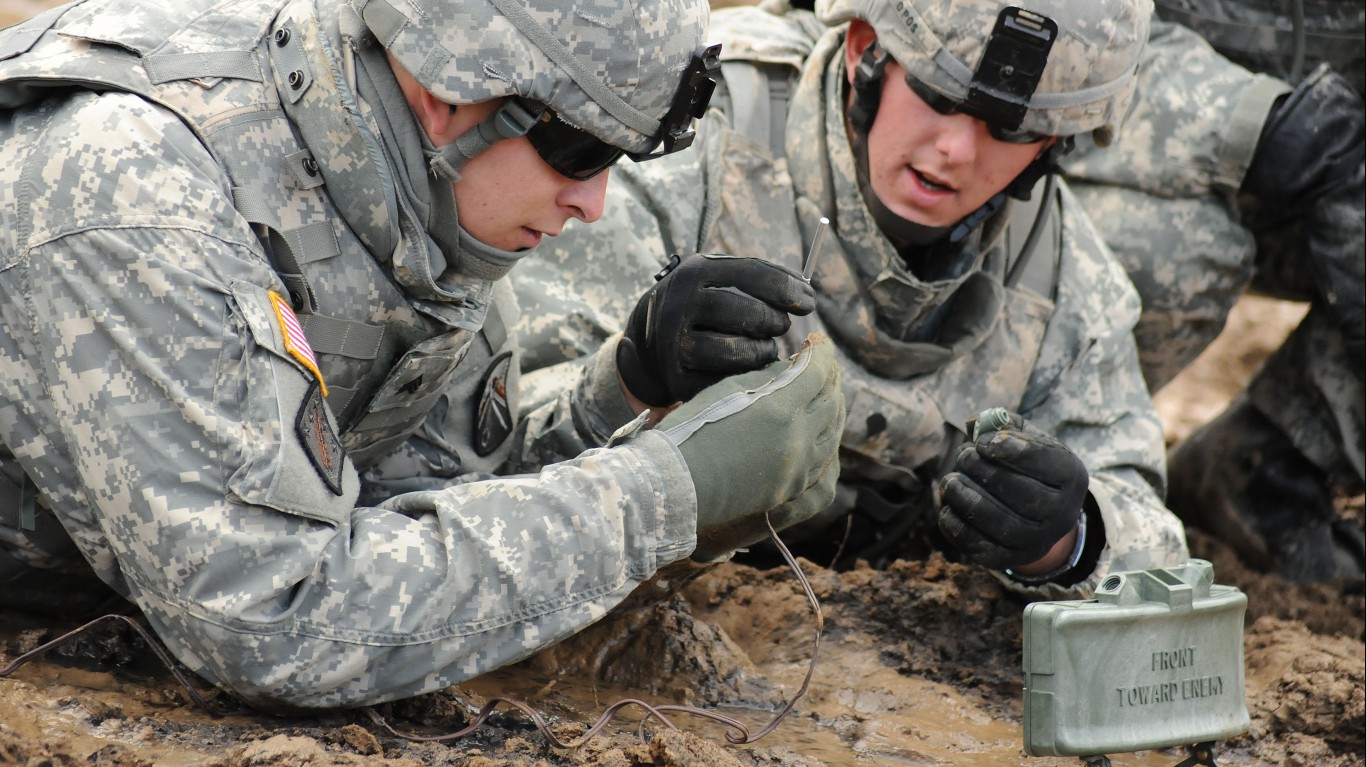
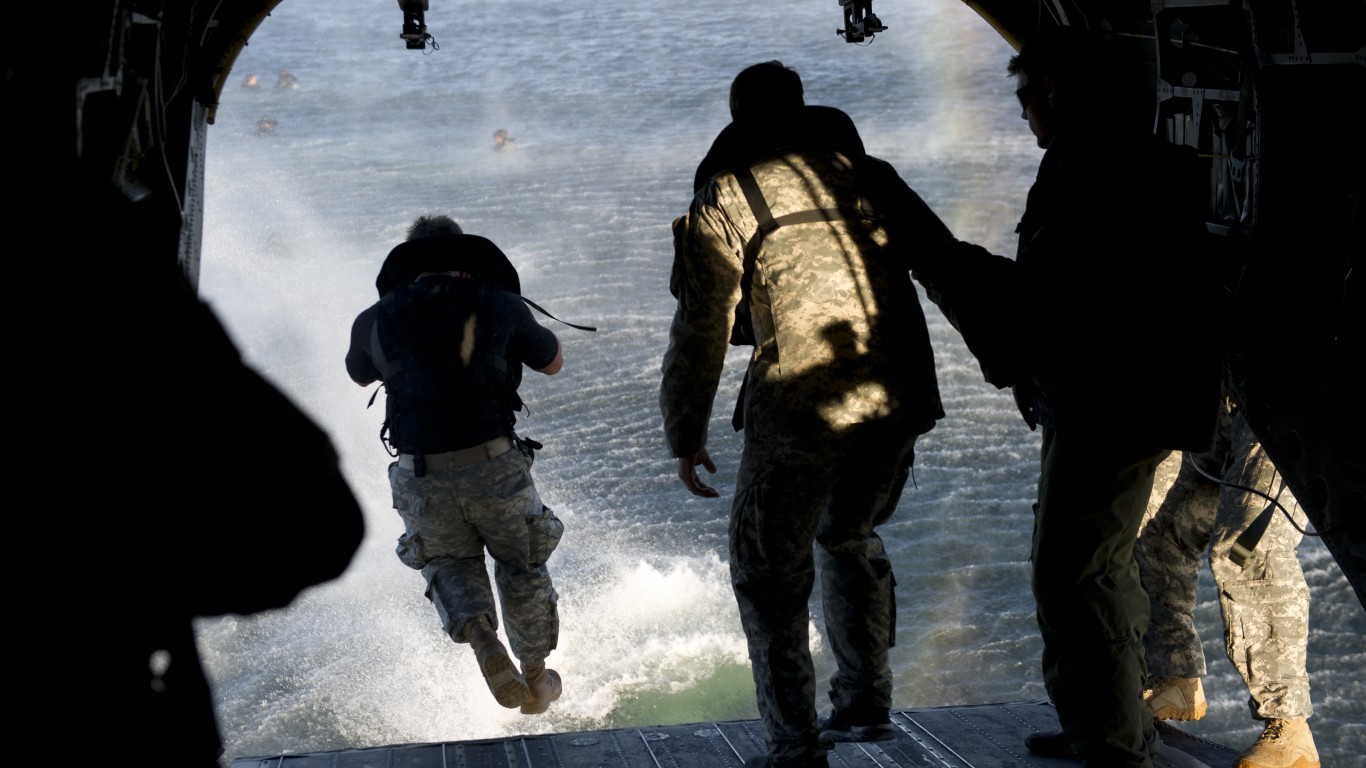 24/7 Wall St.
24/7 Wall St.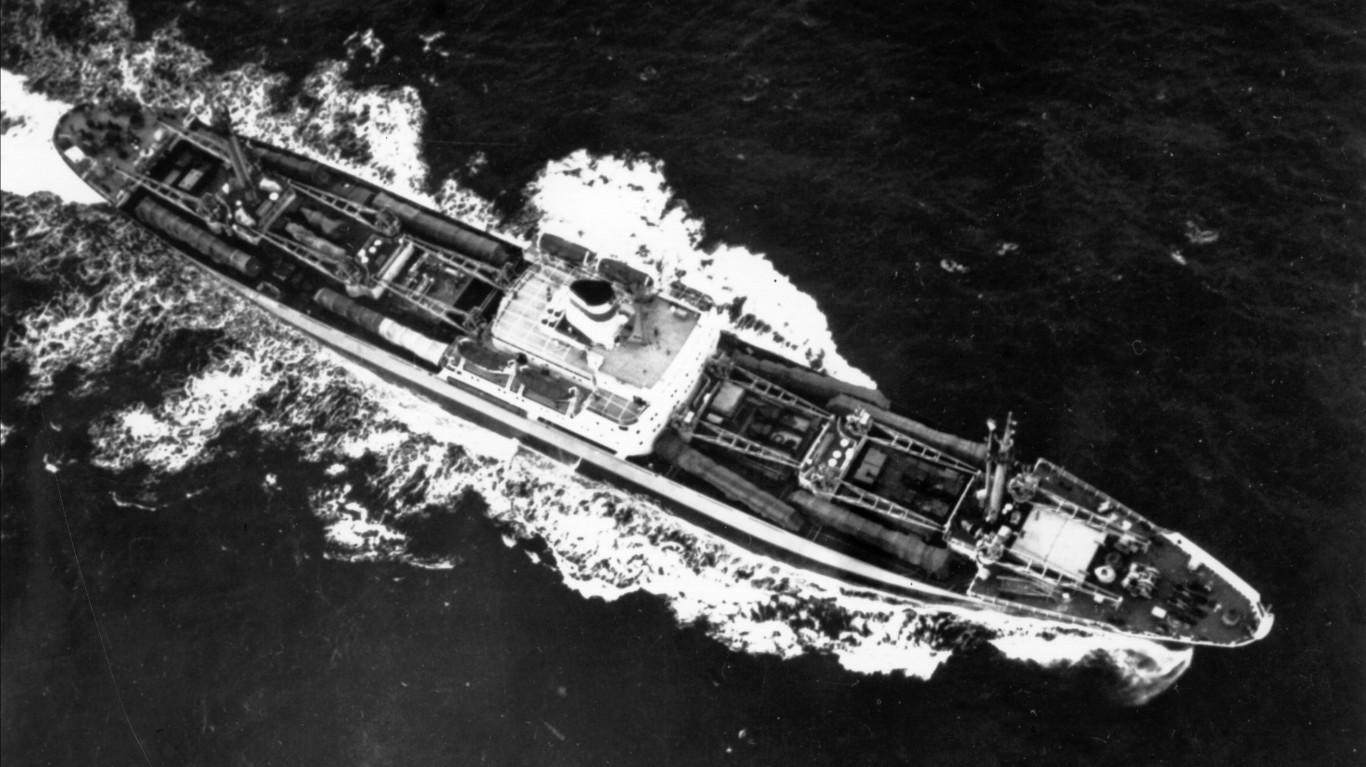 24/7 Wall St.
24/7 Wall St.
